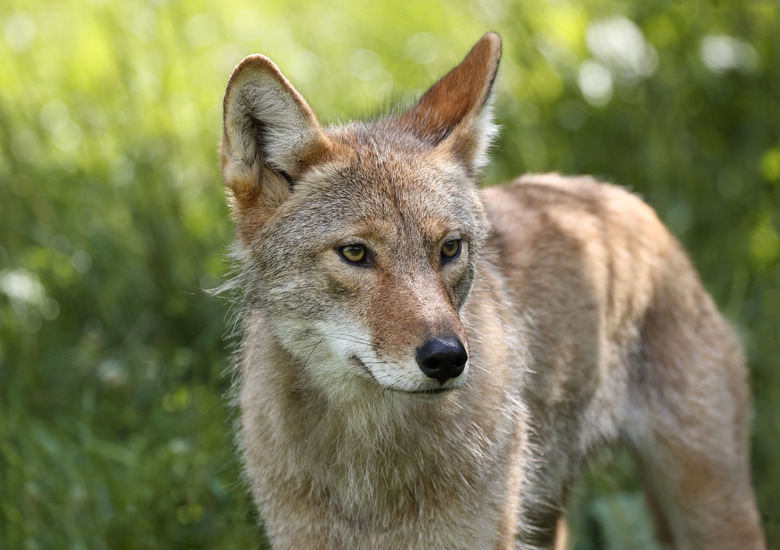Types Of Animals In The Temperate Woodland & Shrubland
Biologists and ecologists categorize the earth's various ecosystems into biomes: geographical areas that share a similar climate, plant and animal population. The temperate (or Mediterranean) woodland and shrubland biome is found on the western coasts of South Africa, Australia and North and South America mainly in the summer-dry, winter-wet Mediterranean climate zones. Plant communities typical of this biome include open woodlands and scrub brush (called chaparral in California), and commonly evolved under the influence of wildfire. The biome supports abundant animal life.
Reptiles and Amphibians of Temperate Woodlands & Shrublands
Reptiles and Amphibians of Temperate Woodlands & Shrublands
Reptiles tend to be abundant and diverse in the world's temperate woodlands and shrublands. In the United States, snakes such as the California whipsnake and the mysterious, little-seen night snake live in this biome. Rattlesnakes also are common. In Europe, you likely would find the Montpellier snake, arrow snake and leopard snake. Amphibians such as salamanders, newts and frogs inhabit more restricted ranges in these zones due to their overall dryness, being mainly tied to wetlands and streams.
Birds of Temperate Woodlands & Shrublands
Birds of Temperate Woodlands & Shrublands
The North American chaparral and associated woodlands support a variety of birds such as hawks, California quail, and western scrub jays. Songbirds, such as warblers, also proliferate here. The cactus wren, the largest wren in the United States, makes the California chaparral its home. Another well-known avian inhabitant is the roadrunner, also sometimes called the chaparral bird.
Mammals of Temperate Woodlands & Shrublands
Mammals of Temperate Woodlands & Shrublands
In the fynbos shrubland of South Africa, meanwhile, typical mammals include:
- musk-shrews
- rabbits
- jackals
- aardwolves
- duikers
- bontebok antelope
Insects of Temperate Woodlands & Shrublands
Insects of Temperate Woodlands & Shrublands
As in many of the world's biomes, insects flourish in temperate woodlands and shrublands. In particular, this biome supports many beautiful types of butterflies, such as the monarch and the zebra swallowtail butterfly, which has unusual black and white wing patterns. Dragonflies, stink beetles, spiders, and ladybugs also inhabit this biome. One of the more interesting spiders is the trap door spider, which builds a burrow with a hidden door to trap its prey.
Cite This Article
MLA
Hipwell, Alisha. "Types Of Animals In The Temperate Woodland & Shrubland" sciencing.com, https://www.sciencing.com/types-animals-temperate-woodland-shrubland-6105855/. 30 April 2018.
APA
Hipwell, Alisha. (2018, April 30). Types Of Animals In The Temperate Woodland & Shrubland. sciencing.com. Retrieved from https://www.sciencing.com/types-animals-temperate-woodland-shrubland-6105855/
Chicago
Hipwell, Alisha. Types Of Animals In The Temperate Woodland & Shrubland last modified March 24, 2022. https://www.sciencing.com/types-animals-temperate-woodland-shrubland-6105855/
